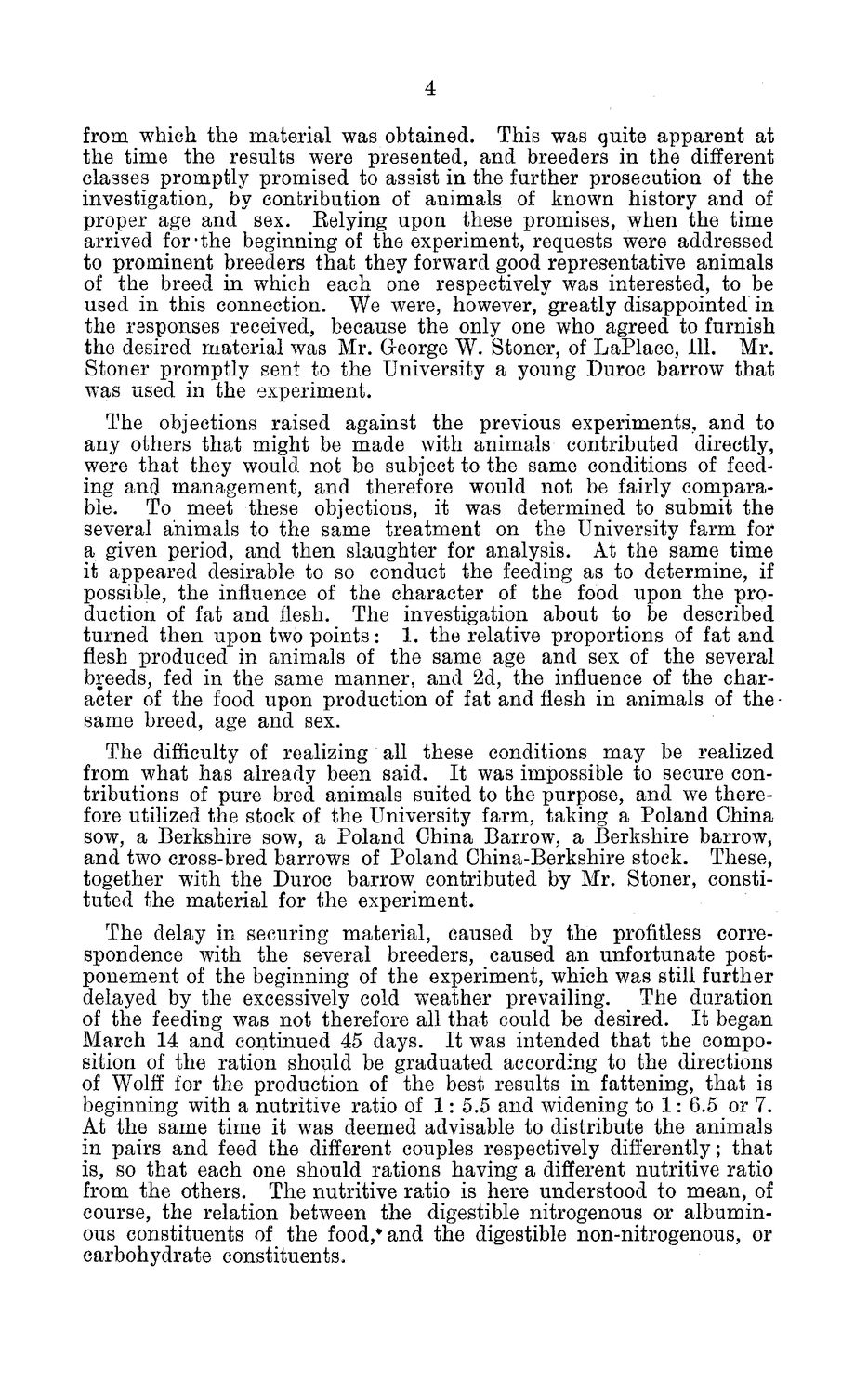| |
| |
Caption: Board of Trustees Minutes - 1884
This is a reduced-resolution page image for fast online browsing.

EXTRACTED TEXT FROM PAGE:
4 from which the material was obtained. This was quite apparent at the time the results were presented, and breeders in the different classes promptly promised to assist in the further prosecution of the investigation, by contribution of animals of known history and of proper age and sex. Eelying upon these promises, when the time arrived for-the beginning of the experiment, requests were addressed to prominent breeders that they forward good representative animals of the breed in which each one respectively was interested, to be used in this connection. We were, however, greatly disappointed in the responses received, because the only one who agreed to furnish the desired material was Mr. George W. Stoner, of LaPlace, ill. Mr. Stoner promptly sent to the University a young Duroc barrow that was used in the experiment. The objections raised against the previous experiments, and to any others that might be made with animals contributed directly, were that they would not be subject to the same conditions of feeding and management, and therefore would not be fairly comparable. To meet these objections, it was determined to submit the several animals to the same treatment on the University farm for a given period, and then slaughter for analysis. At the same time it appeared desirable to so conduct the feeding as to determine, if possible, the influence of the character of the food upon the production of fat and flesh. The investigation about to be described turned then upon two points: 1. the relative proportions of fat and flesh produced in animals of the same age and sex of the several breeds, fed in the same manner, and 2d, the influence of the character of the food upon production of fat and flesh in animals of the • same breed, age and sex. The difficulty of realizing all these conditions may be realized from what has already been said. It was impossible to secure contributions of pure bred animals suited to the purpose, and we therefore utilized the stock of the University farm, taking a Poland China sow, a Berkshire sow, a Poland China Barrow, a Berkshire barrow, and two cross-bred barrows of Poland China-Berkshire stock. These, together with the Duroc barrow contributed by Mr. Stoner, constituted the material for the experiment. The delay in securing material, caused by the profitless correspondence with the several breeders, caused an unfortunate postponement of the beginning of the experiment, which was still further delayed by the excessively cold weather prevailing. The duration of the feeding was not therefore all that could be desired. It began March 14 and continued 45 days. It was intended that the composition of the ration should be graduated according to the directions of Wolff for the production of the best results in fattening, that is beginning with a nutritive ratio of 1: 5.5 and widening to 1: 6.5 or 7. At the same time it was deemed advisable to distribute the animals in pairs and feed the different couples respectively differently; that is, so that each one should rations having a different nutritive ratio from the others. The nutritive ratio is here understood to mean, of course, the relation between the digestible nitrogenous or albuminous constituents of the food,* and the digestible non-nitrogenous, or carbohydrate constituents.
| |